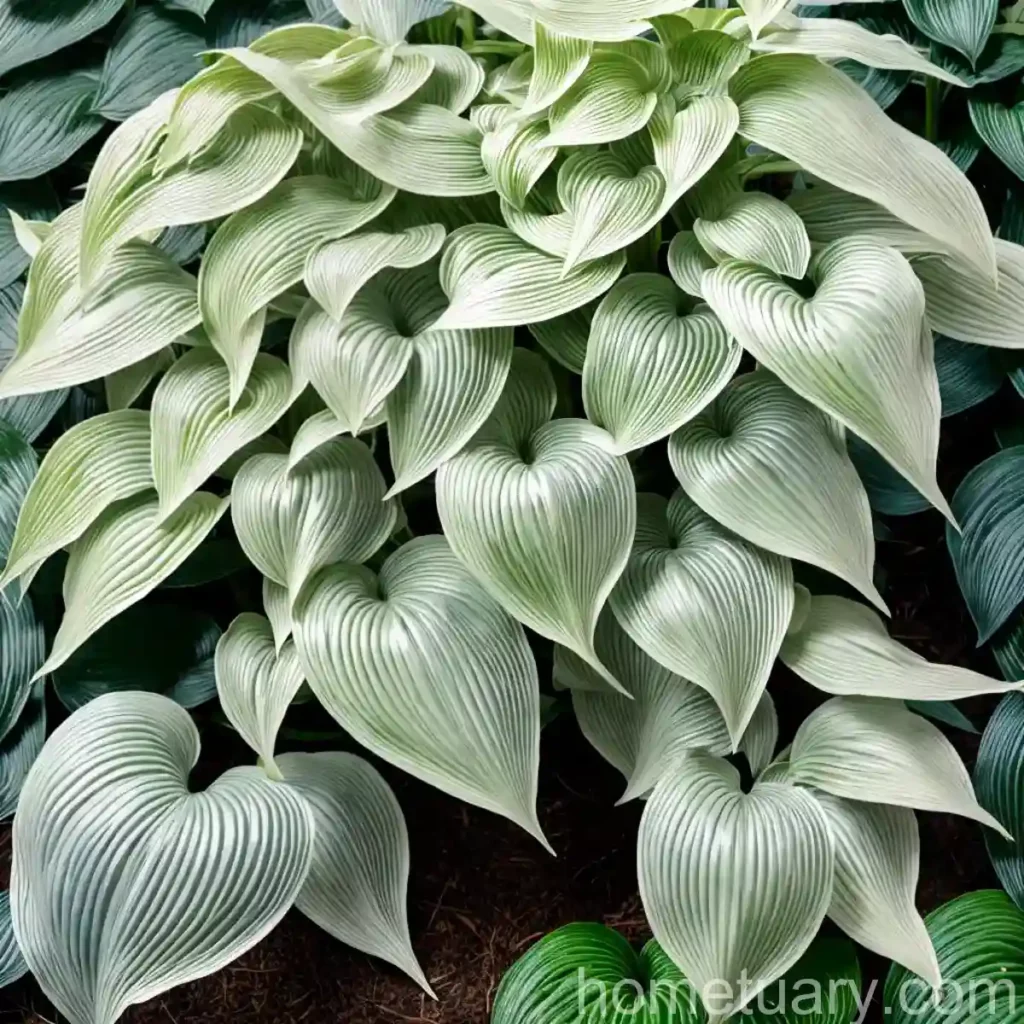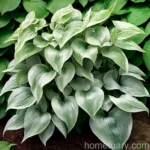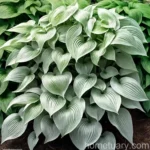Hosta (Hosta ‘August Moon’): A Complete Guide to Care, Uses, and Tips
Hosta is a popular and versatile plant that has become a staple in gardens and landscaping due to its attractive foliage and adaptability to various conditions. Among the numerous hosta varieties available, Hosta ‘August Moon’ stands out for its striking yellow-green leaves and its ability to thrive in shade gardens. In this comprehensive guide, we will delve into the characteristics of Hosta ‘August Moon’, its care requirements, landscape uses, propagation methods, common diseases and pests, as well as botanist’s tips and fun facts.
What is Hosta ‘August Moon’?
Hosta ‘August Moon’ is a herbaceous perennial plant known for its large, heart-shaped, glossy leaves with a bright yellow-green color. This variety is prized for its robust growth and its ability to thrive in shade, making it a popular choice for landscaping in areas with limited sunlight. The leaves of Hosta ‘August Moon’ typically reach a height of 18-24 inches and form dense clumps, creating an attractive ground cover in garden beds and borders.
Key Takeaways – Hosta ‘August Moon’
Before we delve into the specific details of Hosta ‘August Moon’, let’s summarize the key takeaways and outline the topics that this guide will cover.
- Hosta ‘August Moon’ is prized for its large, heart-shaped, glossy leaves with a bright yellow-green color.
- This variety is well-suited for shaded areas and is known for its robust growth.
- The guide will cover the culture, uses, water needs, sunlight requirements, fertilizer, soil, pruning, propagation, container gardening, common diseases, pest control, and botanist’s tips related to Hosta ‘August Moon’.
Now, let’s explore the various aspects of caring for Hosta ‘August Moon’ in more detail.
Culture
Water
Hosta plants, including ‘August Moon’, thrive in moist, well-drained soil. Adequate watering is essential, especially during periods of hot and dry weather. It is important to ensure that the soil remains consistently moist but not waterlogged to support the healthy growth of these plants. Watering the hostas deeply 1-2 times per week, depending on the weather, is generally recommended.
Sunlight
One of the defining characteristics of Hosta ‘August Moon’ is its preference for shaded or partially shaded areas. This variety is well-suited for gardens with limited direct sunlight, making it an excellent choice for landscaping under trees or in areas with dappled light. While some morning sun may be tolerated, it is important to avoid exposing ‘August Moon’ hostas to intense afternoon sun, which can scorch the delicate leaves.
Fertilizer
Fertilizing hostas, including ‘August Moon’, is essential for promoting healthy growth and vibrant foliage. A balanced, slow-release fertilizer with a formula such as 10-10-10 or 12-12-12 can be applied in spring as the plants emerge from dormancy. It is important to follow the manufacturer’s instructions regarding the application rates and to avoid over-fertilizing, which can lead to excessive leaf growth at the expense of the plant’s overall health.
Soil
Hostas, including ‘August Moon’, thrive in well-draining, rich, and slightly acidic soil with a pH level between 6.0 and 7.5. Amending the soil with organic matter, such as compost or well-rotted manure, can improve its texture and fertility, providing an ideal growing medium for hostas. Additionally, incorporating a layer of mulch around the base of the plants helps to maintain soil moisture and suppress weed growth while enhancing the overall aesthetics of the garden bed.
Pruning
Pruning hostas, including ‘August Moon’, primarily involves removing spent flower stalks and yellowing or damaged leaves to maintain the plant’s appearance and health. This can be done throughout the growing season as needed. In late fall or early winter, once the foliage has died back, the plants can be cut back to ground level to tidy up the garden bed and prepare the hostas for the winter months.
Propagation
Hosta ‘August Moon’ can be propagated through division, which involves separating the plant into smaller sections, each with its roots and foliage. This is typically done in early spring as the plants are beginning to emerge from dormancy. The divided sections can then be replanted in suitable locations, allowing them to establish and grow into new clumps over time.
Container Popularity
Hosta ‘August Moon’ is also well-suited for container gardening, making it a versatile choice for individuals with limited garden space or those looking to add visual interest to patios, decks, or other outdoor areas. When growing ‘August Moon’ hostas in containers, it is important to select pots with adequate drainage holes and to use a high-quality potting mix that provides the necessary nutrients and moisture retention for the plants.
Common Diseases
Hostas, including ‘August Moon’, are generally resilient plants but may occasionally be susceptible to certain diseases and pests. Common diseases that can affect hostas include:
- Fungal diseases: such as anthracnose or powdery mildew, which can cause spotting, discoloration, or powdery growth on the leaves.
- Bacterial infections: which may manifest as soft, slimy patches or streaking on the foliage.
- Viral diseases: such as hosta virus X (HVX), which can cause various symptoms, including mottling or distortion of the leaves.
Disease Diagnosis
Diagnosing hosta diseases involves carefully inspecting the plants for any abnormal symptoms, such as unusual spots, discoloration, or texture changes on the leaves. If a disease is suspected, it is important to promptly remove the affected foliage to prevent the spread of the infection. In some cases, it may be necessary to apply fungicidal treatments to manage fungal diseases and reduce their impact on the plants.
Common Pests
Hostas, including ‘August Moon’, can also be targeted by a range of pests, including slugs, snails, and certain insects. These pests may feed on the foliage, leaving behind unsightly damage and affecting the overall health of the plants. In addition to physical barriers and cultural practices such as keeping the garden clean and free of debris, there are various pest control methods that can be employed to manage these nuisances and protect the hostas.
Botanist’s Tips
As a hosta enthusiast and botanist, I have gathered valuable insights and tips for cultivating and enjoying Hosta ‘August Moon’ and other hosta varieties. Here are some of my top recommendations based on years of experience:
- Select suitable companion plants, such as ferns, astilbes, or heucheras, to complement the foliage of ‘August Moon’ hostas and create visually appealing plant combinations in the garden.
- Utilize slug-resistant strategies, such as applying copper tape around the base of hosta containers or using organic slug repellents, to protect the foliage and preserve the plants’ aesthetics.
- Experiment with different planting layouts and groupings to create dynamic and visually engaging landscapes that showcase the unique characteristics of ‘August Moon’ hostas.
Fun Facts
- Hosta ‘August Moon’ is known for its variegated yellow-green foliage, which adds a bright and cheerful presence to shaded garden areas.
- The botanical name “Hosta” honors Austrian botanist Nicholas Thomas Host, who contributed significantly to the study of ferns and other plants during the 18th century.
- Hostas, including ‘August Moon’, are members of the Asparagaceae family and are closely related to agaves, yuccas, and other ornamental plants.
Links to External Resources
For further information on Hosta ‘August Moon’ and related topics, I recommend exploring the following resources:
- American Hosta Society: https://www.hosta.org/
- The Hosta Library: https://www.hostalibrary.org/
- Missouri Botanical Garden – Hosta Care: https://www.missouribotanicalgarden.org/gardens-gardening/your-garden/help-for-the-home-gardener/advice-tips-resources/visual-guides/hosta-care.aspx
In conclusion, Hosta ‘August Moon’ is a remarkable plant that brings beauty and versatility to gardens, landscapes, and container gardens. By understanding its specific care requirements, uses, and characteristics, enthusiasts and gardeners can fully appreciate the unique attributes of this beloved hosta variety and incorporate it successfully into their outdoor spaces. Whether utilized as a ground cover, an accent plant, or a focal point in shaded areas, ‘August Moon’ hostas make a striking addition to any green space, enriching the surroundings with their vibrant foliage and enduring charm.















